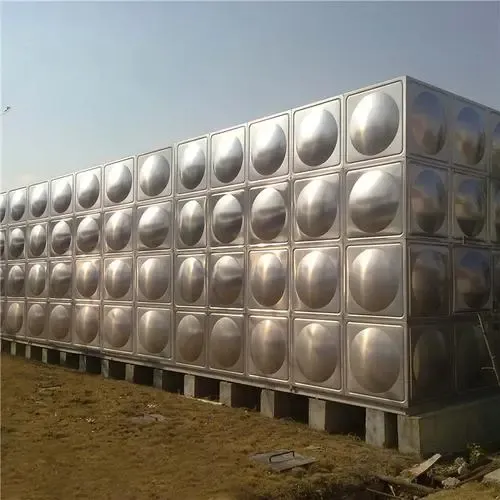loading...
- No. 9, Xingyuan South Street, Dongwaihuan Road, Zaoqiang County, Hengshui, Hebei, China
- admin@zjcomposites.com
- +86 15097380338
- Welcome to visit our website!
Fiberglass Reinforcement Bars for Enhanced Strength and Durability in Construction Applications
Fibreglass Reinforcement Bars A Modern Approach to Construction
In the ever-evolving world of construction materials, fibreglass reinforcement bars, commonly known as GFRP (Glass Fibre Reinforced Polymer) bars, have emerged as a groundbreaking alternative to conventional steel reinforcement bars. These innovative bars offer unique advantages that are reshaping construction practices, especially in environments where traditional materials struggle to perform effectively.
Understanding Fibreglass Reinforcement Bars
Fibreglass reinforcement bars are made primarily from glass fibres embedded in a polymer matrix. This combination results in a lightweight product that possesses a remarkable strength-to-weight ratio. Unlike traditional steel rebar, GFRP bars are non-corrosive, making them exceptionally suitable for applications in harsh environments, including coastal areas, chemical processing plants, and structures exposed to de-icing salts.
Advantages Over Traditional Steel Reinforcement
The intrinsic properties of fibreglass reinforcement bars provide numerous advantages over traditional steel bars. One of the most notable benefits is their resistance to corrosion. In structures where moisture and chemicals can adversely affect steel, GFRP bars maintain their integrity over time, preventing the deterioration that often leads to costly repairs or replacements.
Moreover, the lightweight characteristic of GFRP bars allows for easier handling and installation compared to conventional steel. Construction teams can reduce labor costs and improve efficiency during the building process due to the diminished weight. Additionally, the non-metallic nature of fibreglass bars eliminates the risk of electromagnetic interference, making them ideal for specific structures such as bridges, tunnels, and facilities that house sensitive electronic equipment.
Environmental Benefits
The shift towards fibreglass reinforcement bars also aligns with the growing focus on sustainability in construction. GFRP bars contribute to eco-friendlier building practices due to their longer lifespan and reduced maintenance needs. Fewer repairs mean a reduction in material waste and less energy consumption throughout the life of a structure. Furthermore, fibreglass production typically has a lower carbon footprint when compared to steel manufacturing processes.
fibreglass reinforcement bar

Applications in Modern Construction
GFRP bars have found a diverse range of applications across various sectors. They are increasingly utilized in highway and bridge construction, where resistance to corrosion caused by salt and moisture is paramount. In addition, they are becoming popular in the construction of water treatment facilities, tunnels, and marine structures. The ability to withstand aggressive environmental conditions without compromising structural integrity makes them an invaluable asset in modern engineering design.
In residential and commercial building projects, fibreglass reinforcement bars are also being integrated into foundations, slabs, and walls. Their adaptability allows architects and engineers to enhance the design and functionality of buildings, leading to more innovative structures.
Challenges and Future Prospects
While fibreglass reinforcement bars present undeniable advantages, there are also challenges to overcome. The initial cost of GFRP bars is often higher than traditional steel reinforcement, which can deter some contractors from making the switch. However, as awareness of the benefits grows and production processes become more efficient, the price difference may diminish.
Moreover, continued research and development into composite materials will likely yield improvements in the performance and applicability of fibreglass bars. Innovations such as the incorporation of other reinforcing materials or advanced manufacturing techniques could expand the use of GFRP in even more demanding structural applications.
Conclusion
Fibreglass reinforcement bars represent a significant advancement in construction technology, offering a durable, lightweight, and environmentally friendly alternative to steel reinforcement. As the industry continues to evolve, the adoption of GFRP bars is likely to increase, paving the way for safer, more sustainable infrastructures. Embracing these innovative materials will not only enhance the durability and longevity of structures but also contribute to a greener future in the construction sector. The integration of GFRP bars into engineering practices exemplifies how innovation can lead to improved solutions that address both performance and environmental concerns in a rapidly changing world.
-
GRP Structures: The Future of Lightweight, High-Performance EngineeringNewsJun.20,2025
-
FRP Water Tank: High-Performance Storage for Corrosive and Clean Water SystemsNewsJun.20,2025
-
FRP Square Tube: The New Industry Standard for Chemical and Structural ApplicationsNewsJun.20,2025
-
FRP Pultruded Profiles: The Ultimate Choice for Lightweight Structural StrengthNewsJun.20,2025
-
FRP Handrails: The Safer, Smarter, and Stronger Choice for Modern InfrastructureNewsJun.20,2025
-
FRP Grating: The Smart Solution for Durable, Lightweight Industrial FlooringNewsJun.20,2025
-
Why Choose a Galvanized Water Tank for Your Storage NeedsNewsMay.21,2025
